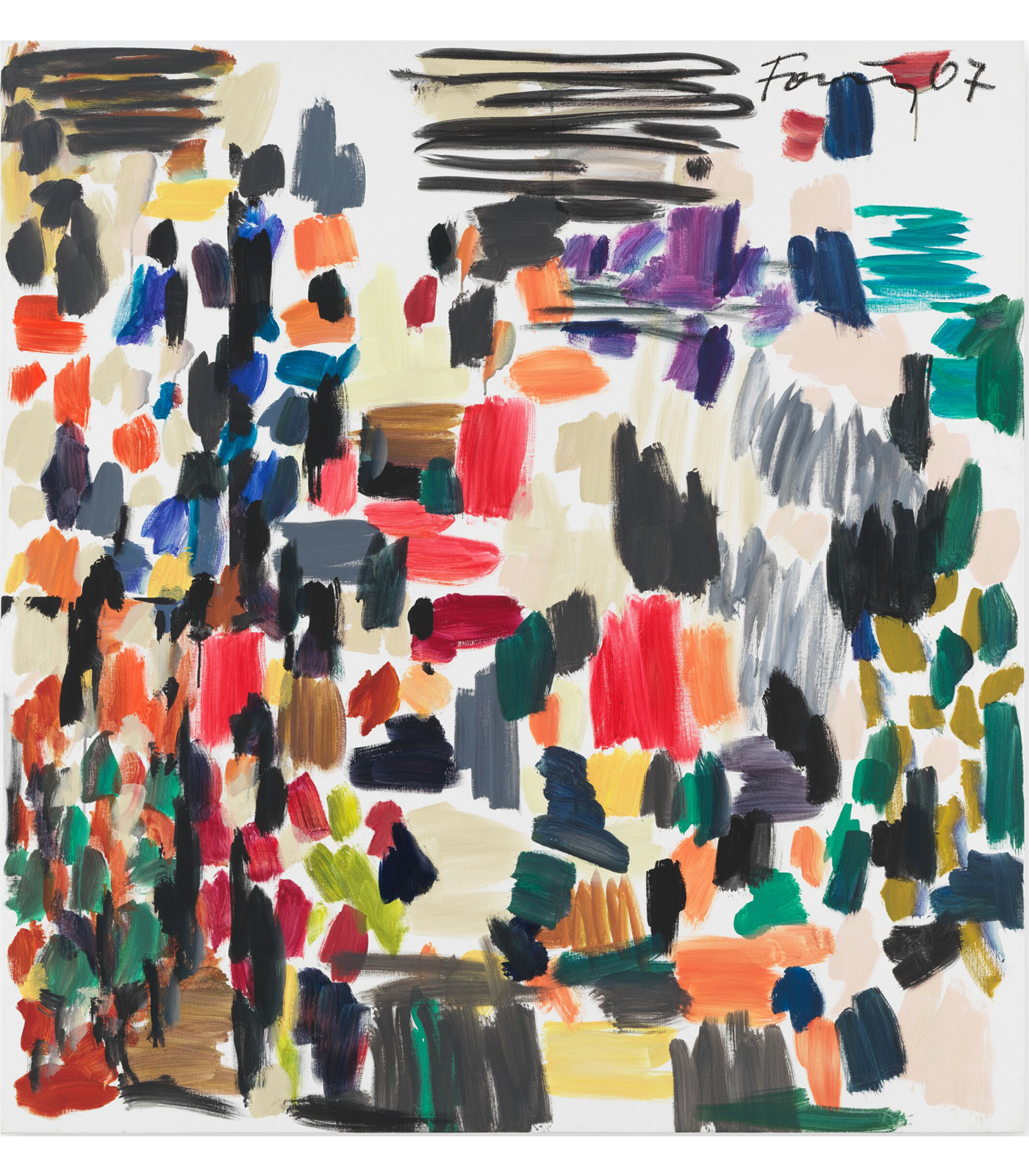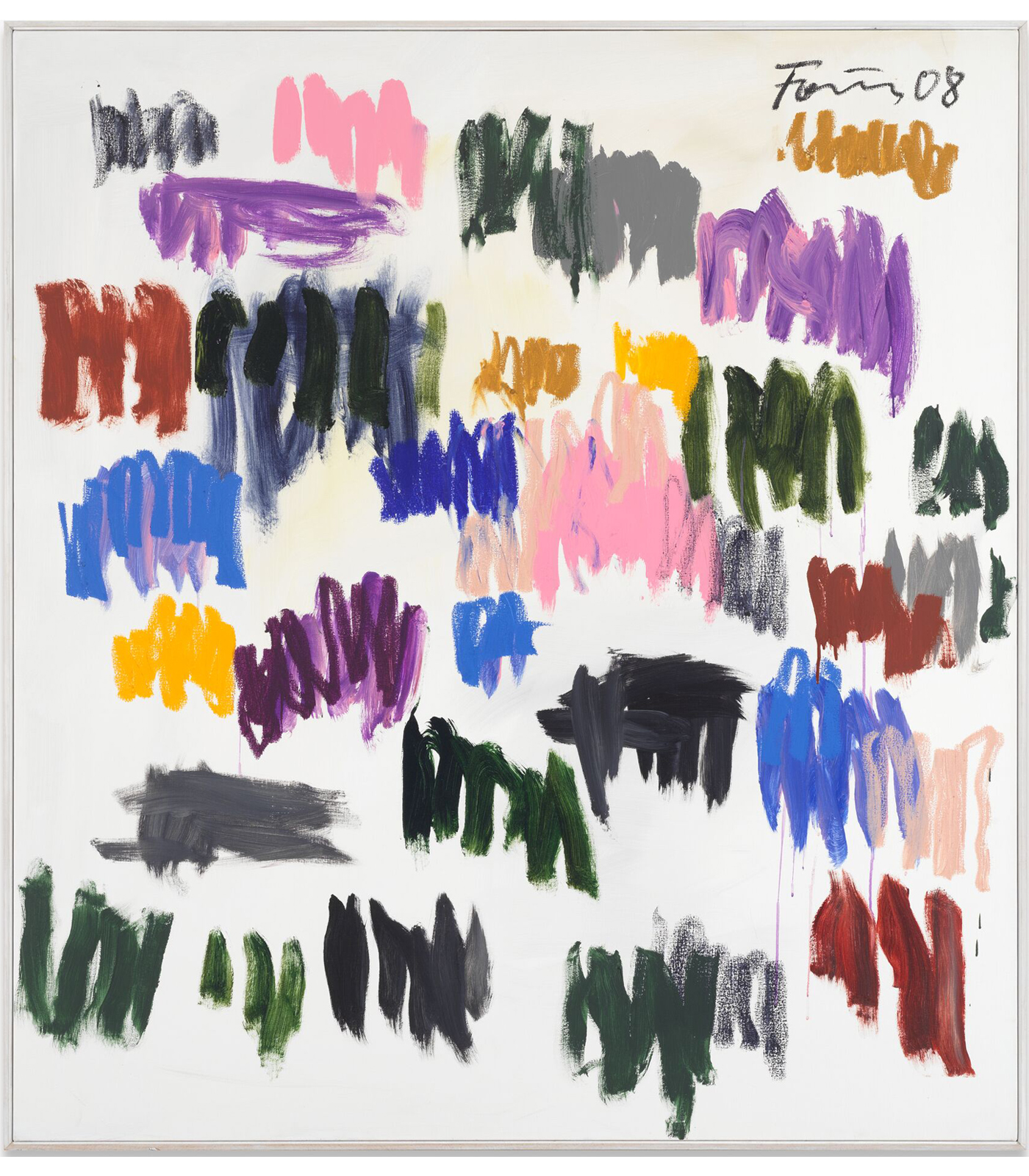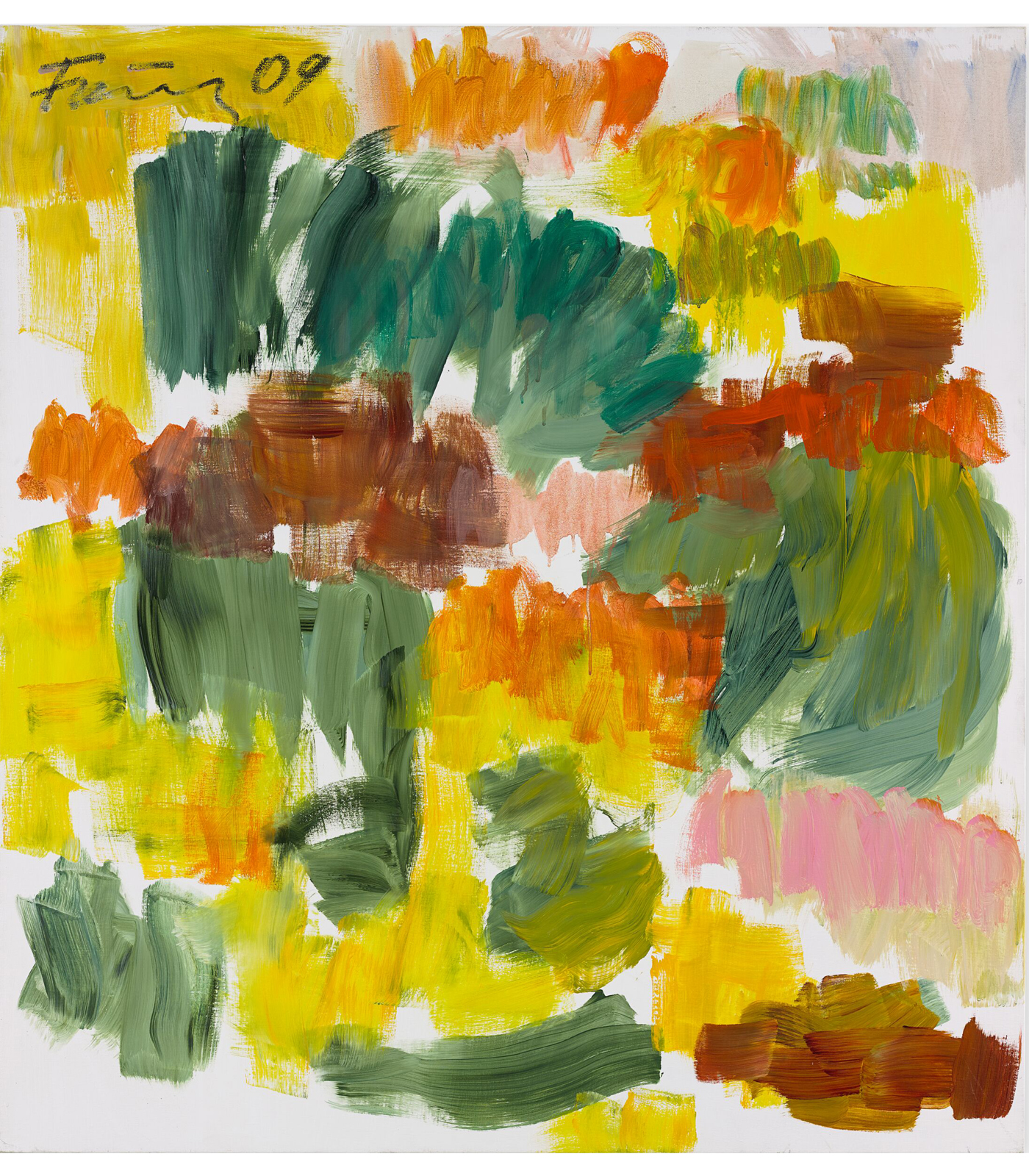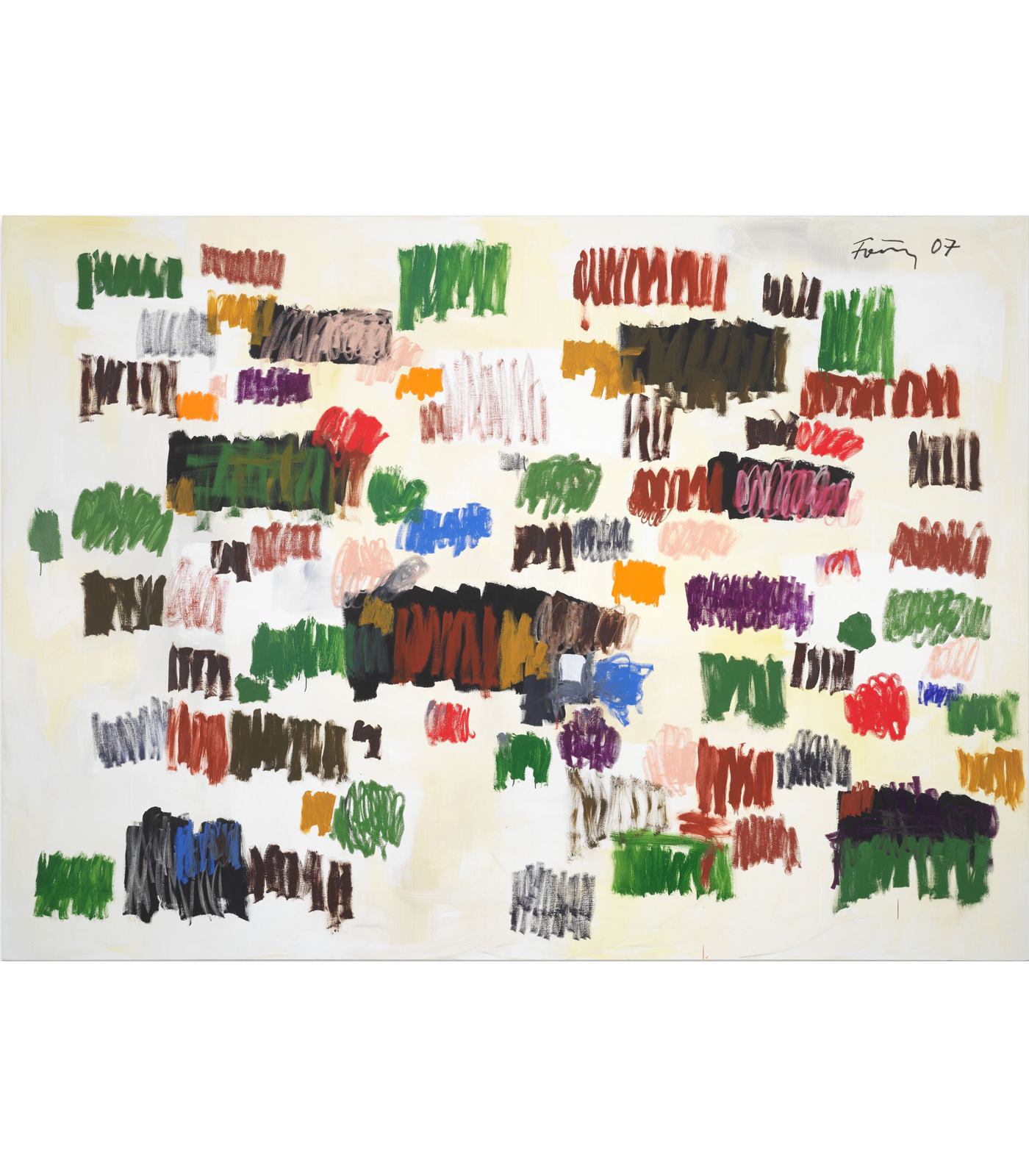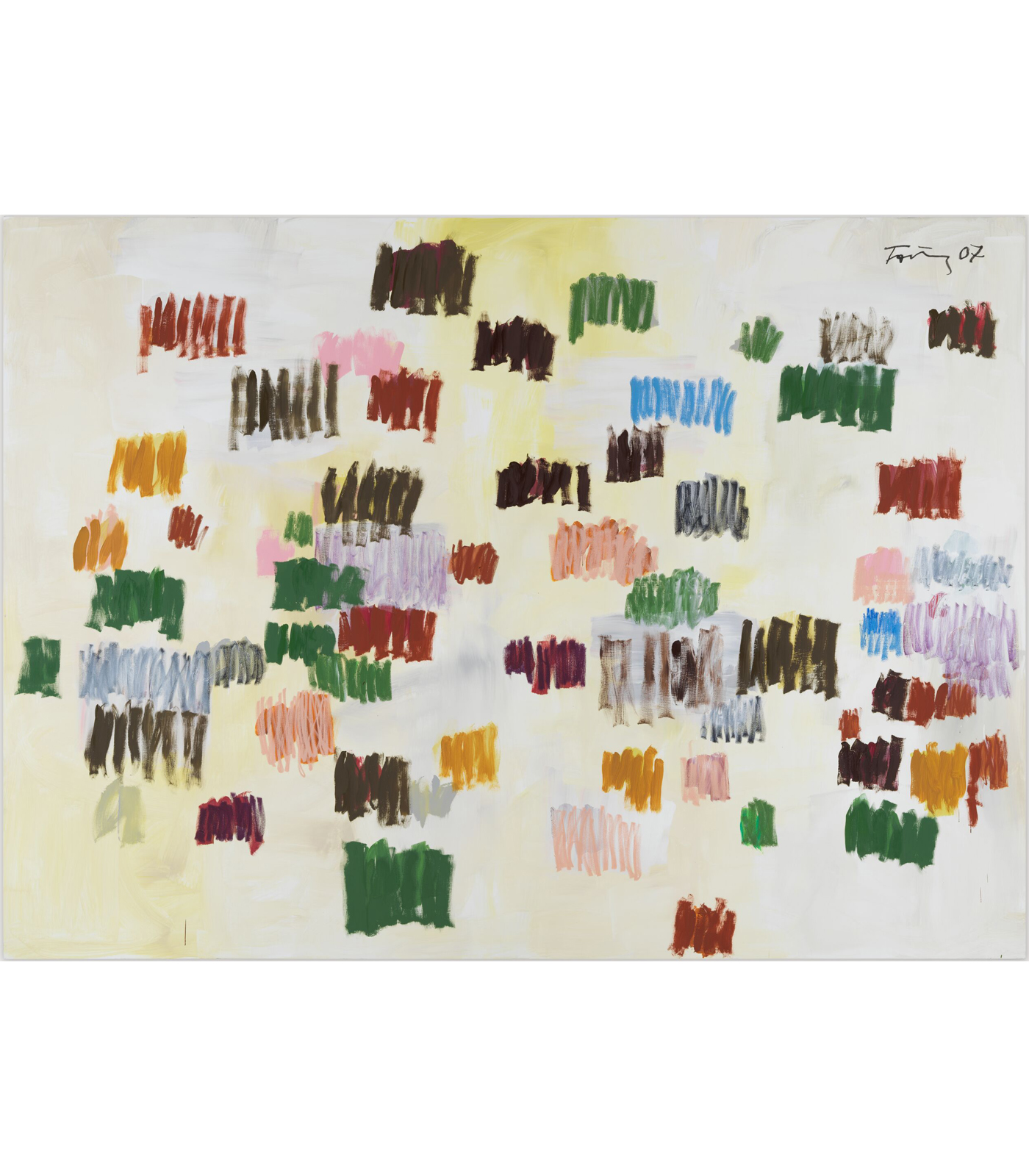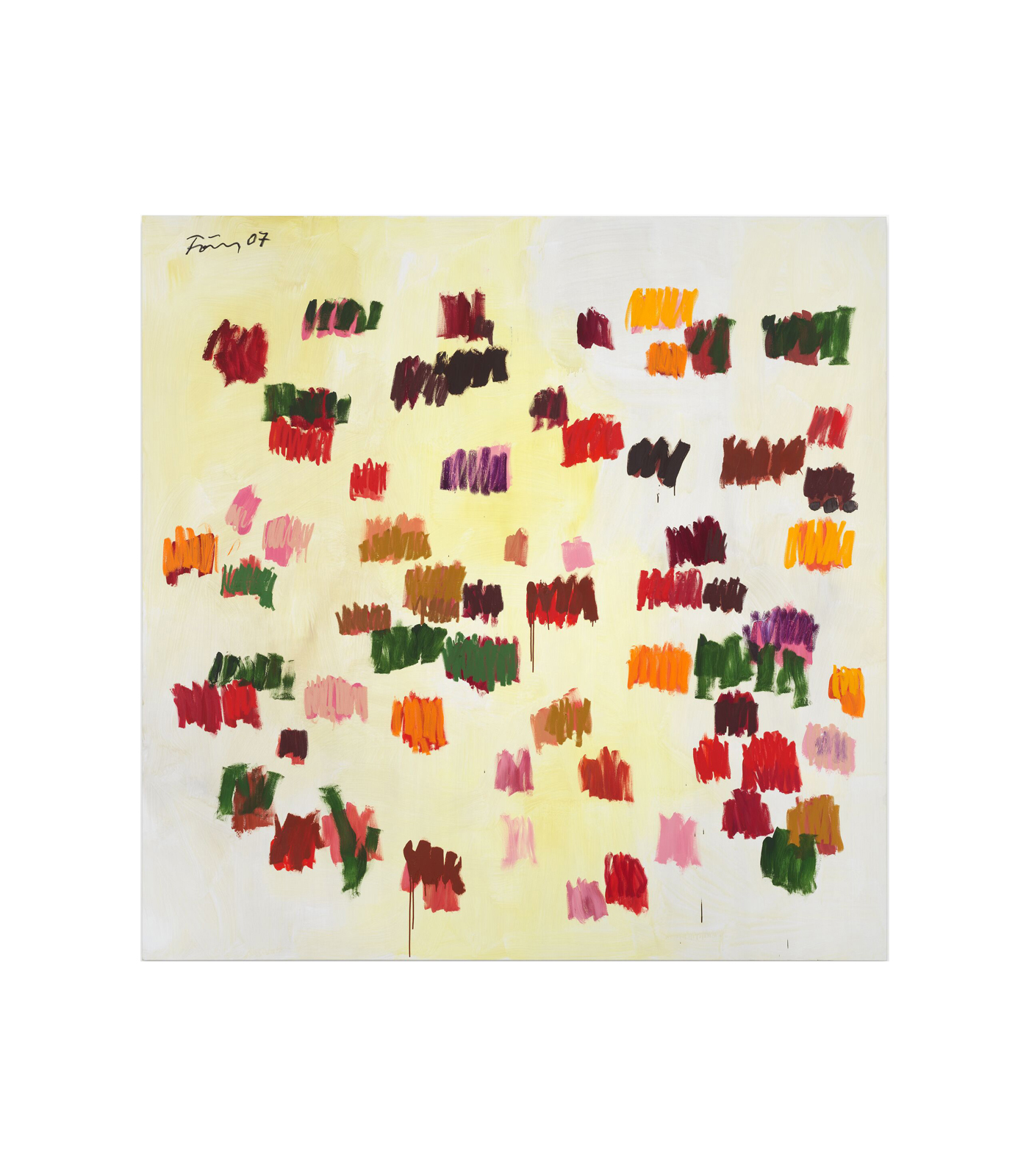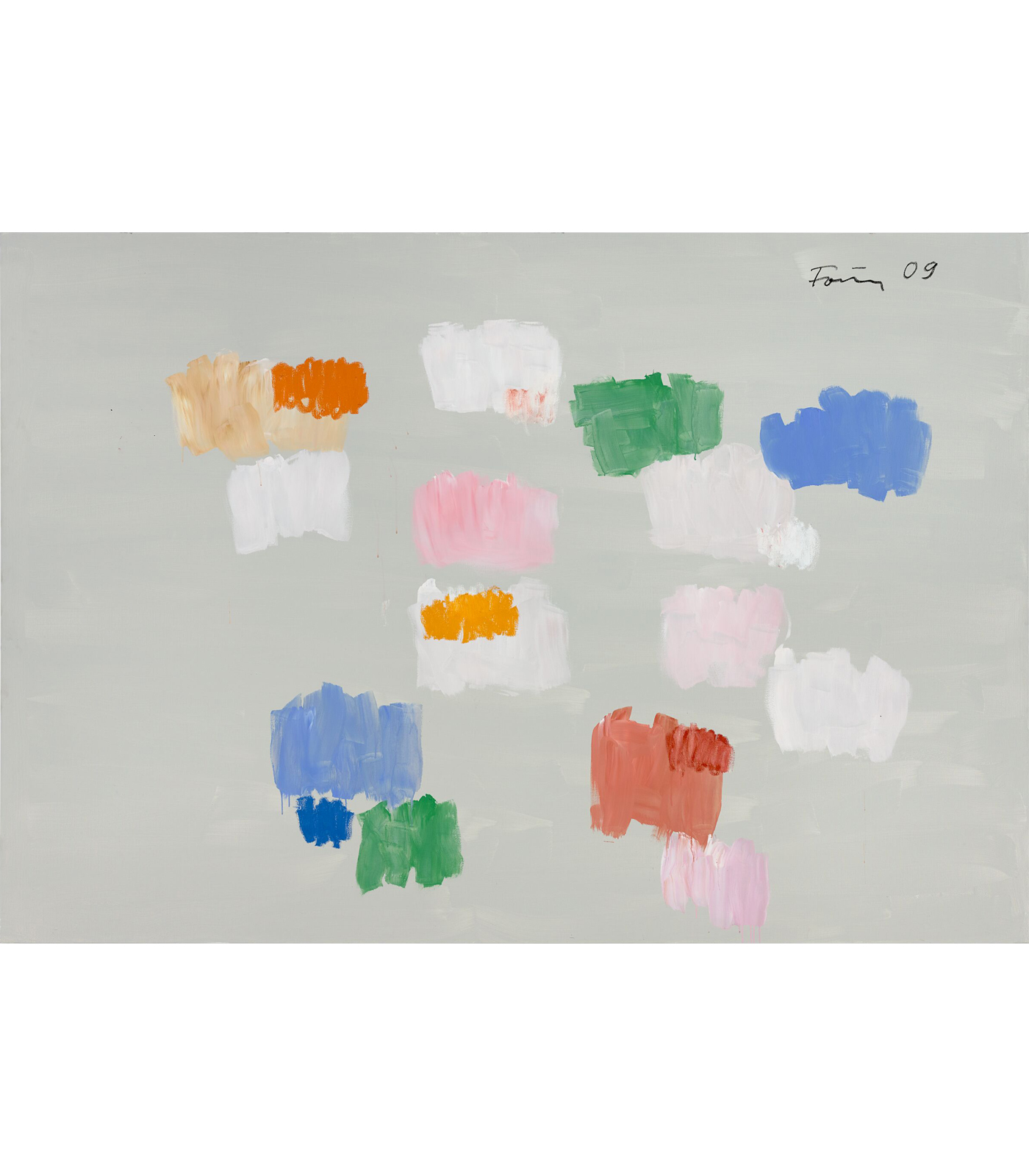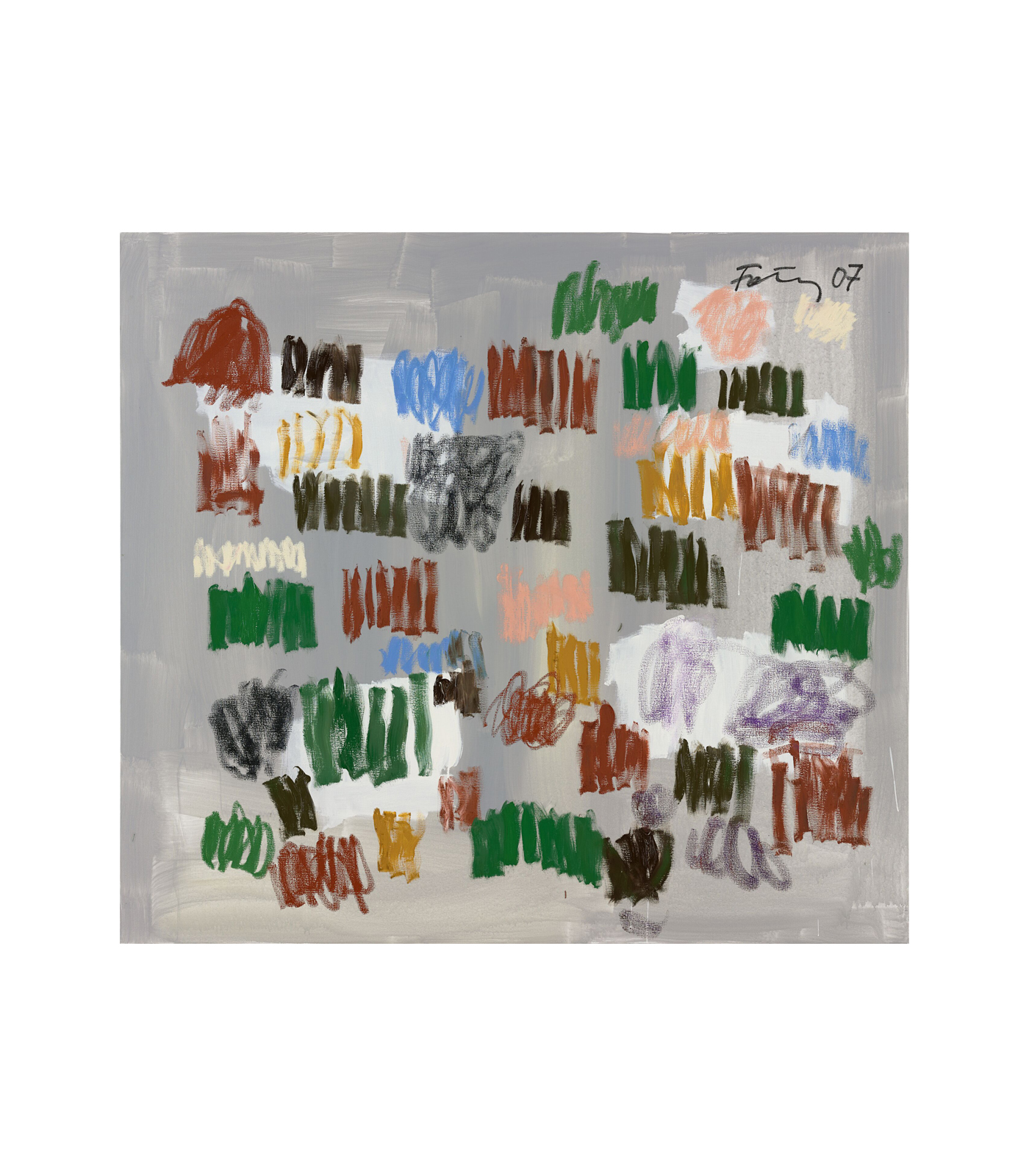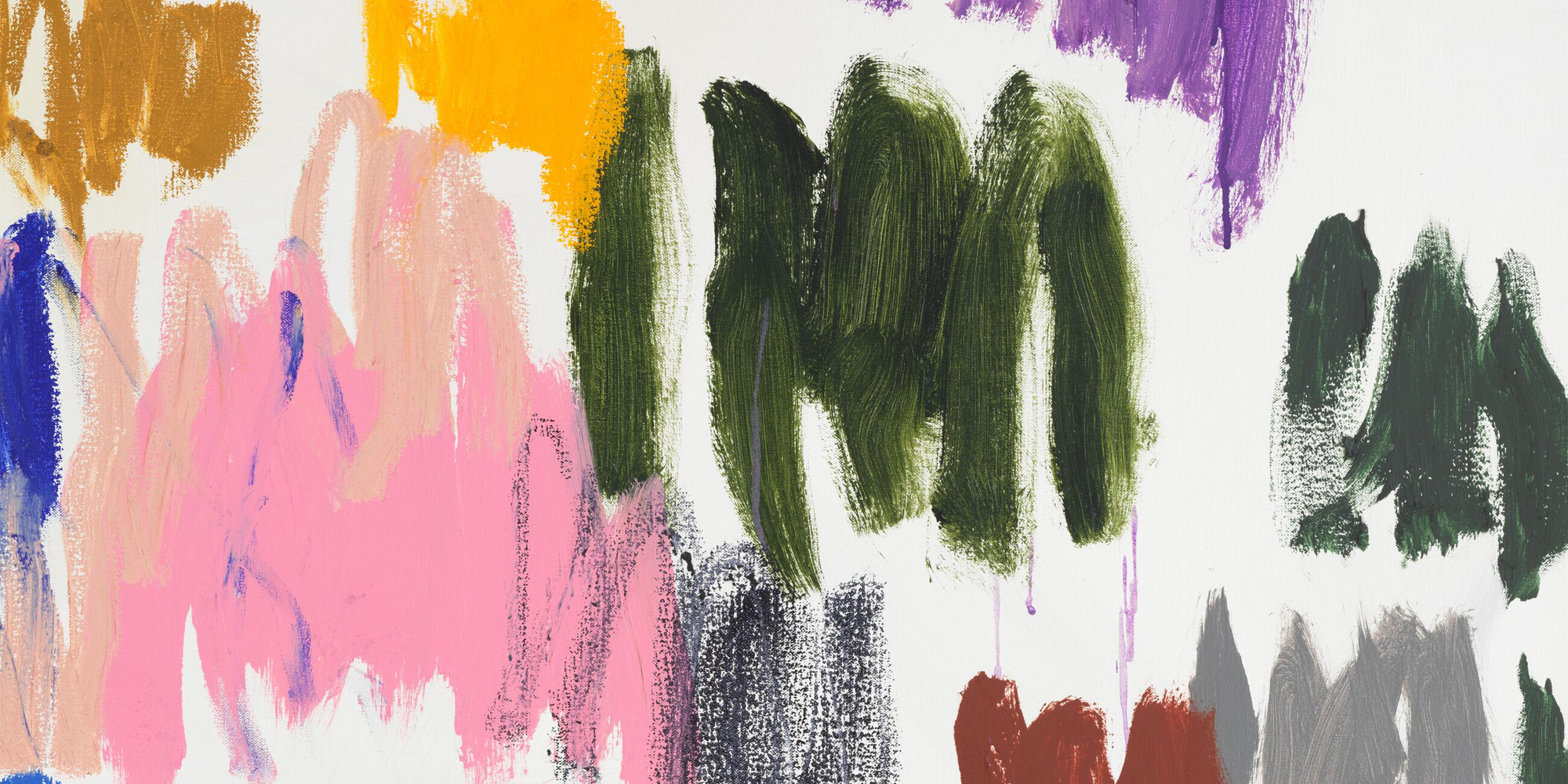
Günther Förg
Tupfenbilder
1 February – 29 April 2023
London
‘I think painting is a resilient practice; if you look through the history of painting it doesn’t change so much and we always see it in the present. It is still now.’—Günther Förg
Explore the exhibition
Günther Förg was a prolific painter, sculptor, graphic designer and photographer whose daring conceptual works incorporate and critique tropes of the sprawling movement known as modernism. This exhibition, in the North Gallery of the London space, displays Förg’s Spot Paintings, the artist’s final series made between 2005 – 2010 before he stopped painting in 2010 after suffering a stroke.
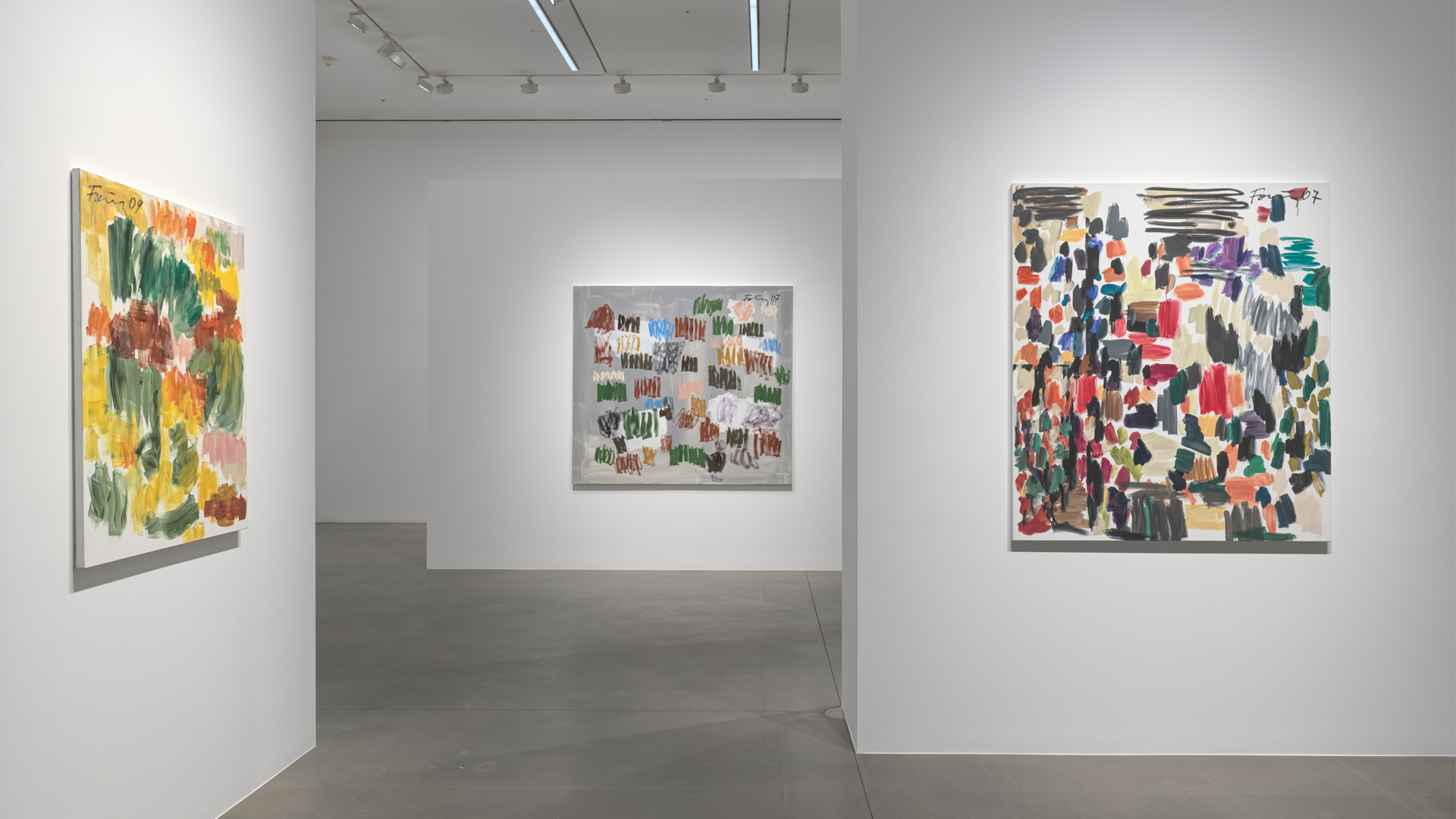
Named the Tupfenbilder series after the German word for ‘spot paintings,’ this body of work celebrates the act of painting, drawing on Förg’s earlier painterly practice but reimagining his previous explorations in innovative ways. In the artist’s own words, ‘I think painting is a resilient practice; if you look through the history of painting it doesn’t change so much and we always see it in the present. It is still now.’
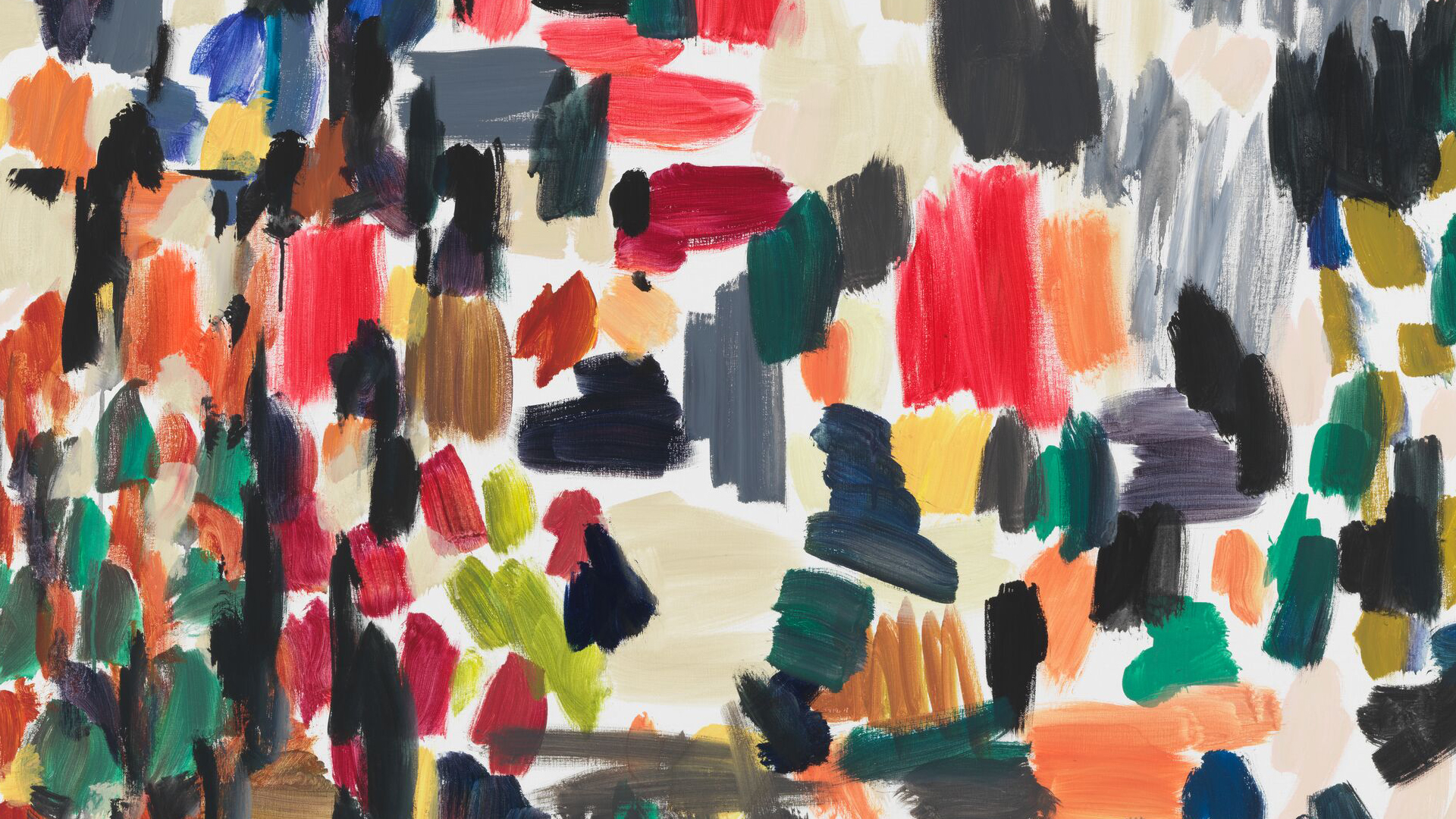
In these works, the brushstroke itself becomes the main protagonist, representing an ultimate return to expressive painting, indicating a completion of sorts—a full-circle arrival at painting as a synthesis of experimentation, rooted in art history.
‘The paintings are like poems instead of constructions; the colours unfold and expose each other, like a line of verse pushes the next line into profile. Sometimes they even rhyme.’—Rudi Fuchs
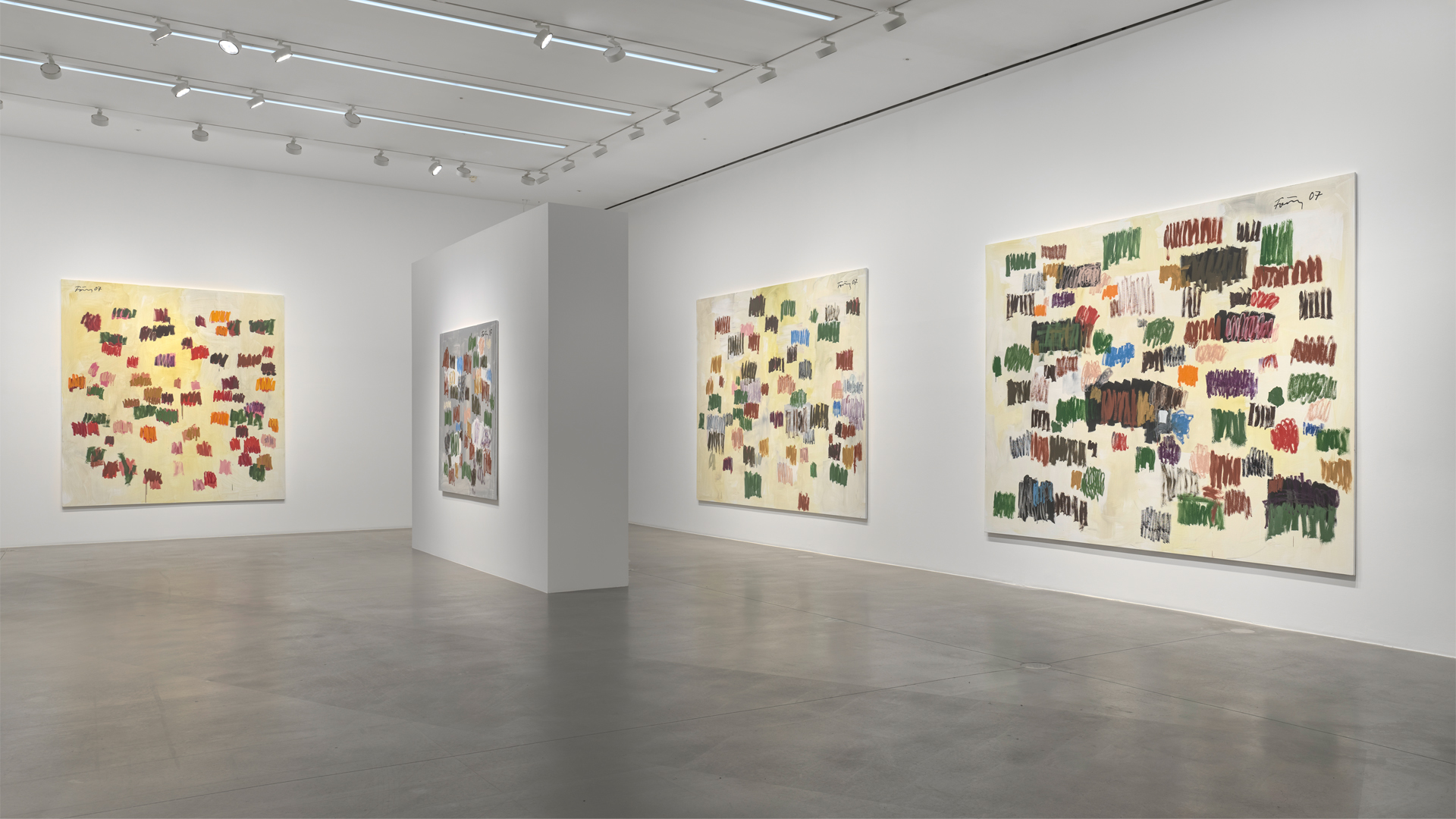
The Spot Paintings were partially influenced by photographs Förg saw of Francis Bacon’s studio, which was covered in colorful blotches of paint created when the artist would wipe his brushes on the walls and door of the studio to remove excess paint. This method was all too familiar to Förg, who would frequently work out the value of a color by dabbing pigment from his brush to a paper or cloth surface. In this way, ‘Untitled’ (2007), as with his other Spot Paintings, enacts an irreverent reversal of artistic tradition.
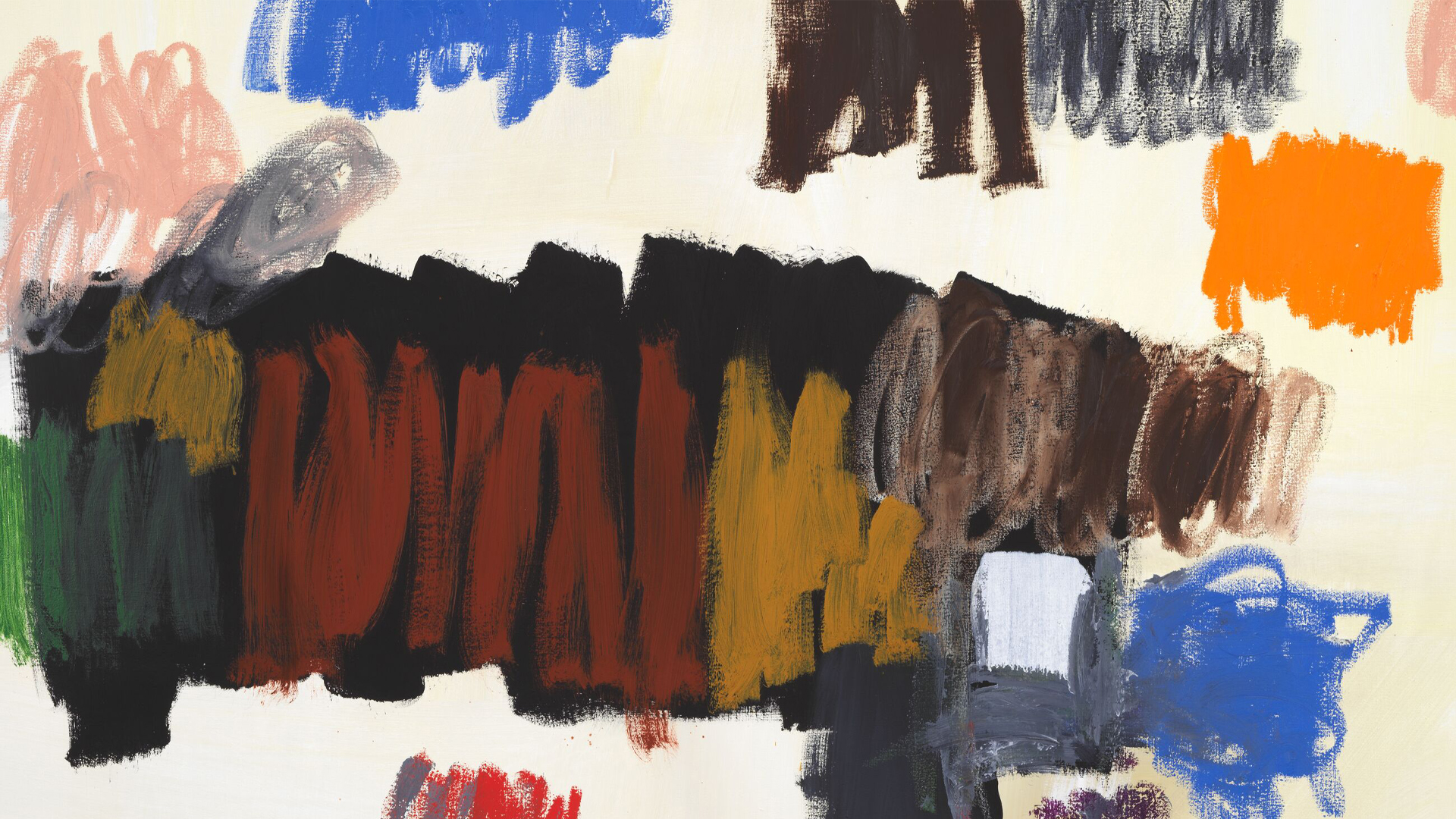
The expressive, dynamic brushstrokes and dabs of color which make up this body of work convey a playful, chromatic harmony. Förg has transformed the previous lattice structures from his renowned series of Grid Paintings into rhythmic, gestural marks that appear to float across monumental canvas, doing away with any previous sense of order.
‘Günther Förg pushed himself to the brink of discord—but only to preserve art in a precarious state of balance: Balance between the traditions of the past and the needs of the present. Balance between austere rationalism and ardent sensuality. Balance between rigor and wit. Balance between composition and turmoil. Balance between pure artistic means and societal representation. Balance between conceptualism and corporeality.’—Christian Malycha
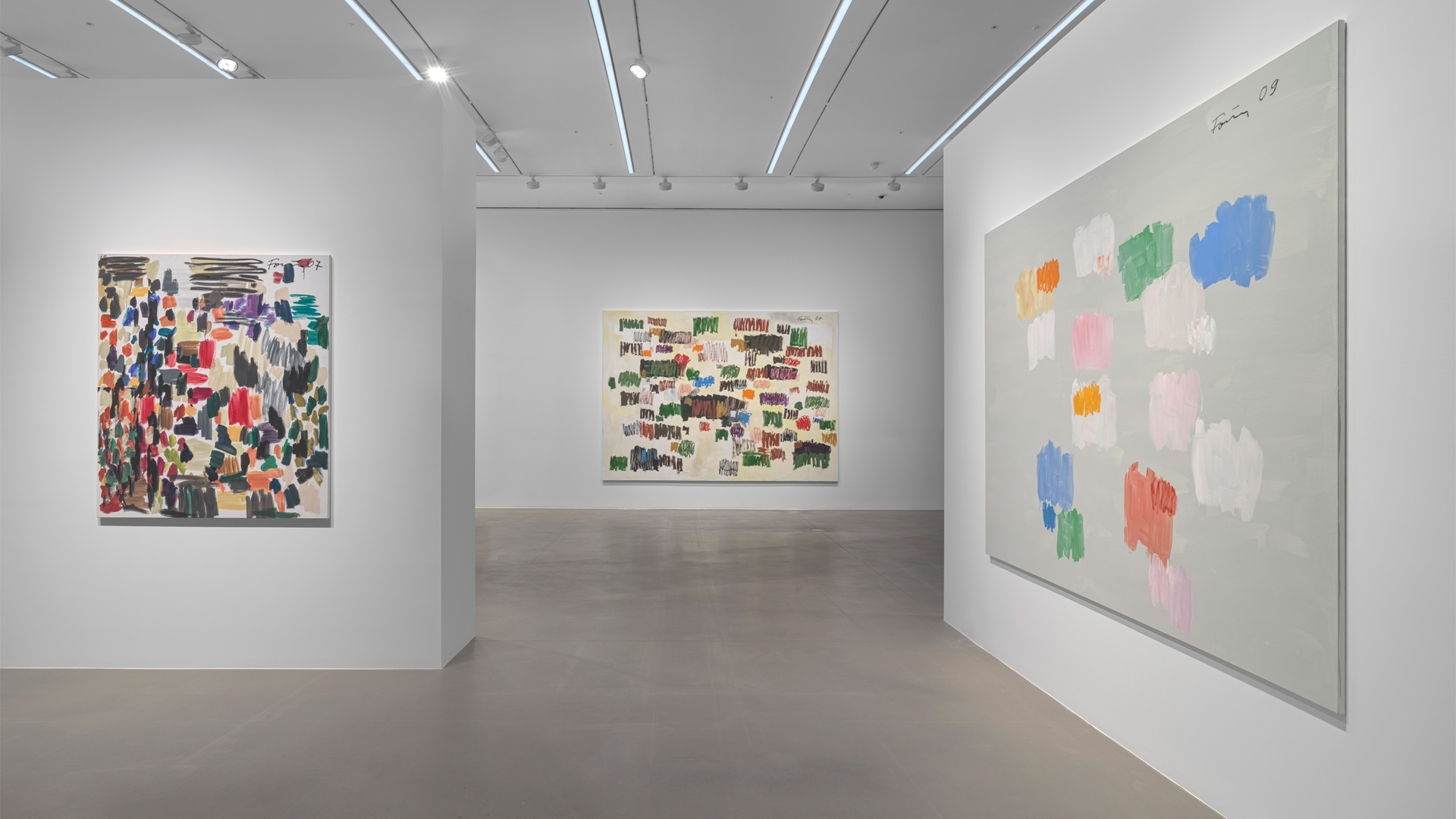
Across the variations of Spot Paintings on display, contrasting shades of greens, pinks, reds, browns and yellows dominate the bustling composition of intersecting cool and pastel hues, which reflect the conceptual principles that underpinned Förg’s practice: a formal purism, a sense of the artwork as object and an architectural, analytical interest in space. Förg uses offwhite background colors and even grey in some instances, bringing a certain solemnity to the paintings in contrast with some of the brighter, energetic colors.
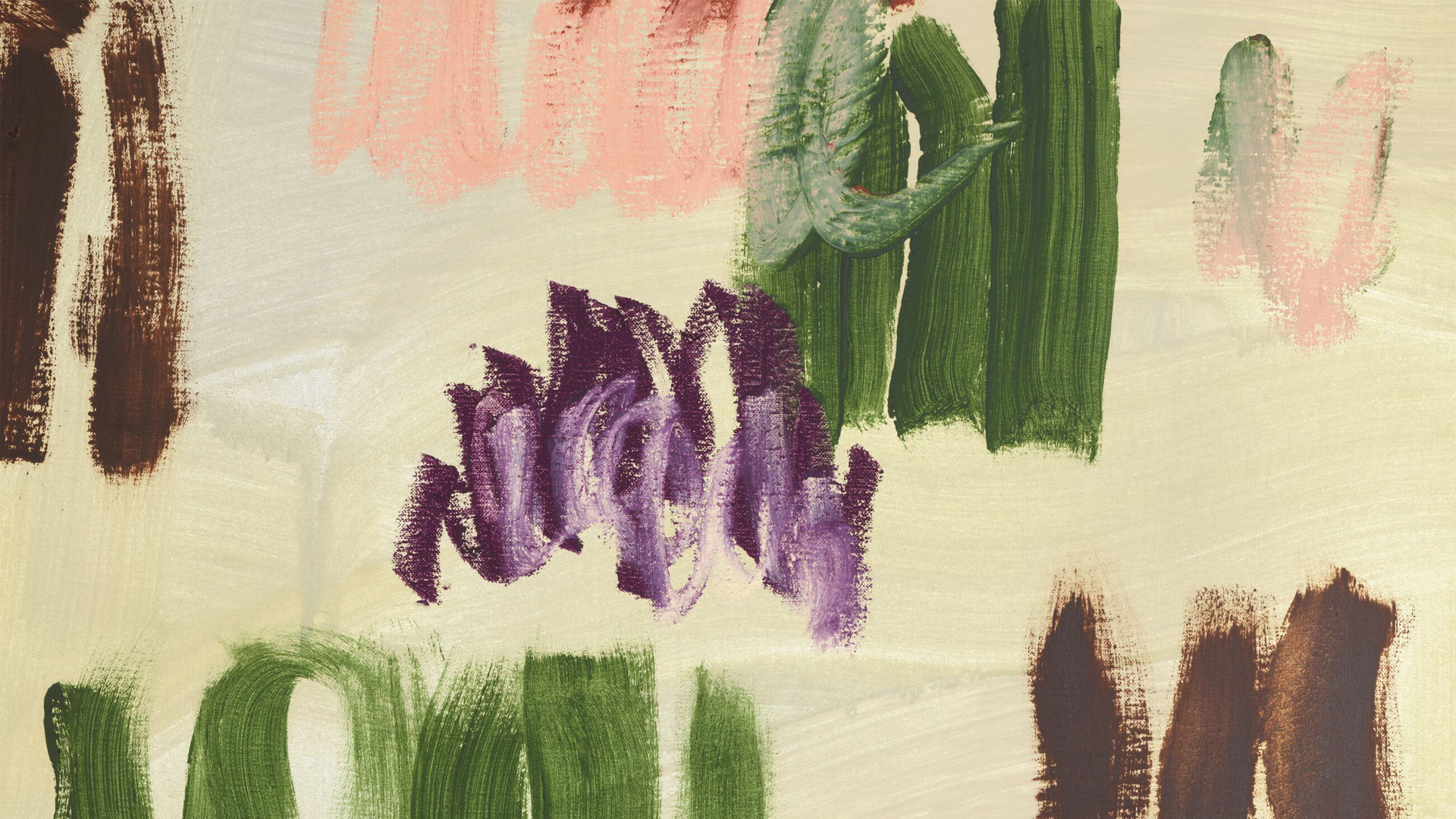
Upon closer inspection, some of the brushstrokes are spontaneous and others are controlled, slow and precise, as the pursuit of pure abstraction required Förg to measure himself, to ensure the brushstrokes remained definitively abstract. The art historian and curator Rudi Fuchs describes this effect: ‘The different movements of brush that make up the painting, are subtly different in manufacture. They have, as it were, different formal temperaments. Decisive, hesitant, fragile, tentative, abrupt, compact. One cannot even begin to appraise the effect of floating, dancing colours.’ The variations in the brushstrokes work to avoid any sense of a recognisable pattern, as Rudi Fuchs continues to say, ‘hanging there, fuzzy as they all are, their precise role is to avoid any recognizable shape and to be utterly and truly abstract.’
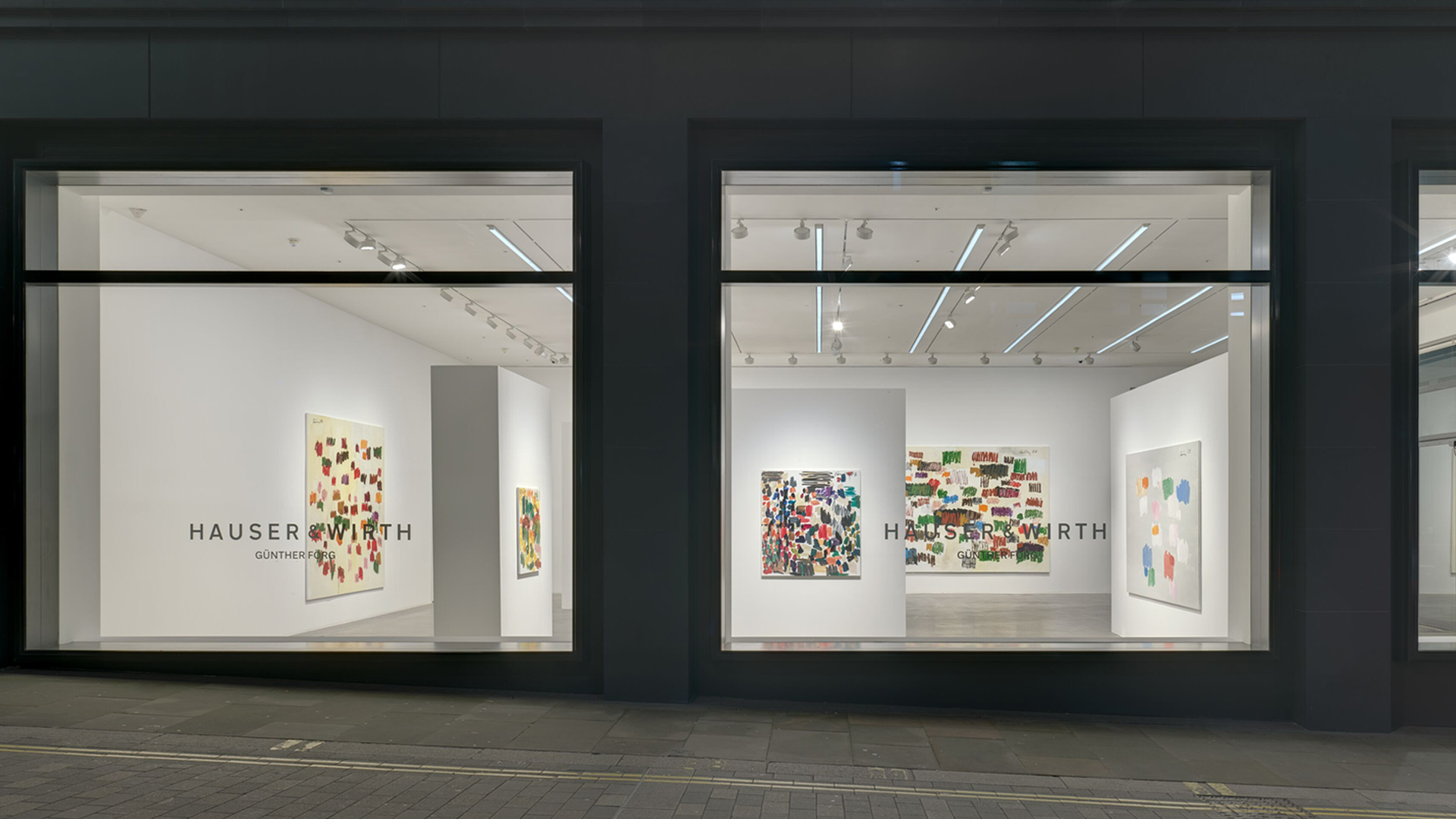
On view in London
The gallery is open Tue – Sat, 10 am – 6 pm. Please visit our location page to plan your visit.
About the Artist
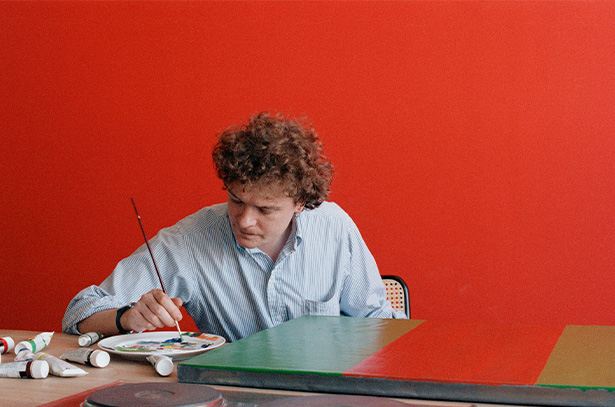
Günther Förg
Günther Förg was born in 1952 in the region of Allgäu, Germany. His career began in the early 1970s as a student at The Academy of Fine Art Munich. During his studies, Förg developed a practice grounded almost exclusively in grey and black monochrome. These early investigations into gray—also called ‘Gitter’ paintings—demonstrate the beginning of a lifelong commitment to conceptualism. As he stated, ‘Grey is nothing: not white, not black. Something in between. Not concerned with the figure. Something free.’ While the artist later incorporated color into his monochrome series, his use of gray represents a neutral foundation from which he conceived his oeuvre.
In the 1980s, Förg began utilizing photography, printing large-format images of culturally—and politically—significant architectural structures, from Bauhaus buildings in Tel Aviv to Fascist constructions in Italy. This diversification of material and form led Förg to abandon painting altogether, and for some years he pursued a purely photographic practice as a reaction against painting itself. He would later reflect that his use of photography was a method of ‘working closer to reality,’ stating, ‘what one paints is not reality.’
Throughout the 1980s and 1990s, his photographic works achieved critical acclaim and were exhibited at major museums internationally, including the Kunsthalle Bern in Switzerland and The Solomon R. Guggenheim Museum, New York NY. During this time, Förg also began experimenting upon the exhibition space itself, painting over the gallery walls, and positioning photographs against his own paintings.
Förg entered a new phase of experimentation in the late 1980s, which brought him back to painting, but also included the embrace of new materials for him, such wood, copper, bronze, and lead. Förg’s renowned lead series—acrylic painted on sheets of lead and supported by wooden frames—blurs the line between painting and sculpture in an evolution towards object-making. Also initiated during the 1980s, his bronze sculptural practice indicates a painterly quality, with indentations and marks that are reminiscent of a brushstroke, as he attempted to replicate a moment frozen in time.
In pursuit of further artistic experimentation Förg began producing fragmented body-part sculptures in the early 1990s, describing this arrival at figuration as inevitable. These new works embraced the materiality of their making; the heavy, weathered, and scratched surfaces of the sheets of metal, lead, and wood hint at something that is simultaneously formal and expressionist, geometric and free.
By the beginning of the 21st century, Förg’s paintings had left the formality of Minimalism behind. In a new direction, he incorporated a brighter palette and more expressive hand with a series of grid-like marks and intersecting colors. These paintings—called ‘Gitterbilder’ (grid paintings)—command a similar freedom of form and sensuality that has led to critical comparisons to Cy Twombly. Other works from this era portray vast canvases of negative space interrupted by colorful, gestural hatching and mark-making. Förg’s ultimate return to expressive painting indicates a completion of sorts—a full-circle arrival at painting as a synthesis of experimentation, rooted in art history. In the artist’s own words, ‘I think painting is a resilient practice; if you look through the history of painting it doesn’t change so much and we always see it in the present. It is still now.’
Image credit: © Wilhelm Schürmann, Herzogenrath
Inquire about available works by Günther Förg
On view now through 29 April 2023 at Hauser & Wirth London.
Related Content
Current Exhibitions
1 / 11
